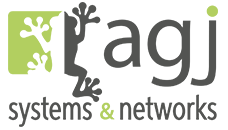The recent data breach at Memorial Hospital at Gulfport is the latest reminder of how imperative I.T. security really is. The phishing attack put about 30,000 Gulfport, Mississippi patient’s data at risk when the hacker gained access to a hospital employee’s email account which gave patient names, dates of birth, health insurance, type of medical care delivered and some Social Security numbers. Eleven days passed by before the staff was made aware of the data breach.
According to TechRepublic, 95% of data breaches come from three industries: government, retail and technology. These aren’t the top three because they lack proper procedures to protect their data – they’re popular targets because of the highly identifying information up for grabs. Although healthcare records weren’t in the top three they are obviously strong targets because of all the data they contain as seen in incidents like the one at Memorial Hospital at Gulfport. The risk of personal data being available isn’t the only one to consider in healthcare data breaches – Medicare fraud and insurance abuses account for thousands of misallotted federal money.
It is virtually impossible to manually monitor security events across a business, meaning those that try this method may find themselves lacking the ability to address security risks on a regular basis and not be able to clearly analyze an incident after-the-fact to prevent a repeat data breach. Even the best laid plans have vulnerabilities that are regularly exploited by cybercriminals. Small businesses are sometimes considered low hanging fruit for hackers - they are almost expecting low security measures to be in place. The best defense is an enterprise solution that has your business and customers protected.
AGJ offers a SIEM (Security Information & Event Management) solution that provides real-time analysis of security alerts generated by applications and network hardware. Being able to look at all security related data from a single point of view improves our response time by being able to spot patterns that are out of the ordinary when they occur. Our SEIM solution works by collecting security-related events from end-user devices, servers, network equipment as well as security - related firewalls, antivirus or intrusion prevention systems. The data collectors then forward events to a centralized management console where AGJ’s security analysts sift through the noise, connecting the dots and prioritizing security incidents.
All organizations are subject to audits, but those businesses who face hefty stipulations for noncompliance are particularly vulnerable. Healthcare comes first to mind being that Medicaid and Medicare reimbursement amounts for delivered care depends on HIPAA and industry standards. SIEM solutions give peace of mind to organizations like this by improving compliance reporting and granting early detection of incidents that would otherwise go unnoticed. A study by SecurityScorecard done in 2016 provided some scary insight for healthcare industries.
Among the report’s findings are:
- Over 75% of the entire US healthcare industry has been infected with malware over the last year.
- Over 50% of the healthcare industry has a Network Security score of a C or lower
- Healthcare has the 5th highest count of ransomware among all industries
Juniper Research data suggests that cybercrime will cost businesses over $2 trillion in 2019. With cybersecurity attacks happening every 39 seconds, the question at hand becomes how can businesses not afford a managed security service provider (MSSP).



